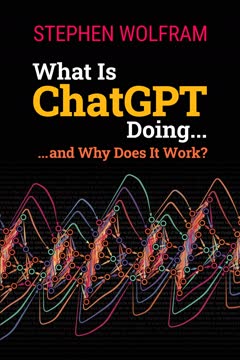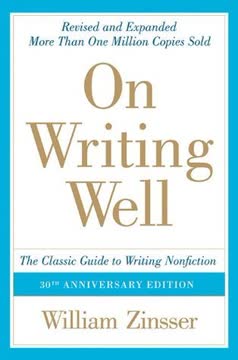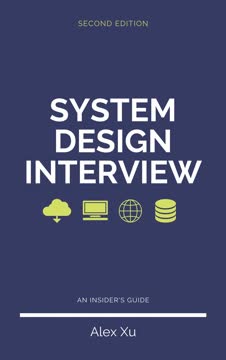Key Takeaways
1. Critical thinking is essential for personal and professional success
"Critical thinking has become a corporate buzzword, like synergy or core competency. However, unlike those empty words, critical thought represents a proven tradition of deep understanding and problem solving, which has advanced our society immeasurably."
Definition and importance: Critical thinking is the ability to analyze information objectively, make reasoned judgments, and solve complex problems. It involves:
- Gathering and evaluating evidence
- Identifying assumptions and biases
- Considering alternative perspectives
- Drawing logical conclusions
Benefits of critical thinking:
- Improved decision-making
- Enhanced problem-solving skills
- Increased creativity and innovation
- Better communication and persuasion abilities
- Greater adaptability in a rapidly changing world
Critical thinking skills are highly valued by employers across industries, as they contribute to organizational success and individual career advancement.
2. The Paul-Elder framework provides a structured approach to critical thinking
"Paul and Elder's framework has three sections: reasoning, intellectual standards, and intellectual traits."
Key components of the Paul-Elder framework:
-
Elements of Reasoning:
- Purpose
- Question at issue
- Information
- Concepts
- Assumptions
- Implications
- Point of view
- Interpretation and inference
-
Intellectual Standards:
- Clarity
- Accuracy
- Precision
- Relevance
- Depth
- Breadth
- Logic
- Significance
- Fairness
-
Intellectual Traits:
- Intellectual humility
- Intellectual courage
- Intellectual empathy
- Intellectual autonomy
- Intellectual integrity
- Intellectual perseverance
- Confidence in reason
- Fair-mindedness
By applying these elements, standards, and traits, individuals can systematically analyze and evaluate information, leading to more robust critical thinking processes.
3. Bloom's Taxonomy offers a hierarchical model for developing critical thinking skills
"Bloom's pyramid presents a practical path to innovation through critical thinking. It reminds us of two important facts. First, that genuine critical thought is hard work! There are several steps we need to take, and each one can be challenging. Second, if you do the hard work, you can create something genuinely new and exciting."
Levels of Bloom's Taxonomy (revised version):
- Remember: Recall facts and basic concepts
- Understand: Explain ideas or concepts
- Apply: Use information in new situations
- Analyze: Draw connections among ideas
- Evaluate: Justify a stand or decision
- Create: Produce new or original work
Practical application: When approaching a problem or learning task, progress through these levels to deepen understanding and develop critical thinking skills. For example:
- Remember: List key facts about the issue
- Understand: Explain the problem in your own words
- Apply: Use relevant information to propose potential solutions
- Analyze: Compare and contrast different solutions
- Evaluate: Assess the strengths and weaknesses of each solution
- Create: Develop an innovative approach based on your analysis
4. Recognize and overcome common barriers to critical thinking
"We think of our early years as a time of great joy. However, anxiety is an integral part of our formative years. After all, it is a stage where so much of what children encounter is unprecedented and frightening."
Common barriers to critical thinking:
- Beliefs: Unexamined assumptions and cultural norms
- Biases: Cognitive shortcuts that can lead to flawed judgments
- Emotions: Strong feelings that cloud rational judgment
- Intuition: Relying on gut feelings instead of careful analysis
Strategies to overcome barriers:
- Practice self-awareness: Recognize your own biases and emotional reactions
- Seek diverse perspectives: Actively engage with differing viewpoints
- Question assumptions: Regularly challenge your own beliefs and those of others
- Develop emotional intelligence: Learn to manage emotions effectively
- Use structured thinking tools: Apply frameworks like Paul-Elder or Bloom's Taxonomy
By identifying and addressing these barriers, individuals can enhance their critical thinking abilities and make more objective decisions.
5. Apply critical thinking skills in various real-life situations
"Critical thinking is the ability to think through connected ideas thoroughly and independently based solely on reason and evidence. It is the focused and disciplined act of turning our mental abilities towards the resolution of real-world problems."
Areas for applying critical thinking:
-
Workplace:
- Problem-solving
- Decision-making
- Strategic planning
- Performance evaluation
-
Education:
- Research and analysis
- Essay writing
- Project planning
- Peer review
-
Personal life:
- Financial planning
- Relationship decisions
- Health choices
- Career development
Practical tips for application:
- Define the problem or question clearly
- Gather relevant information from reliable sources
- Analyze and evaluate the information objectively
- Consider alternative perspectives and solutions
- Make decisions based on logical reasoning
- Reflect on the outcome and learn from the experience
By consciously applying critical thinking skills in various aspects of life, individuals can make better-informed decisions and achieve more successful outcomes.
6. Cultivate key characteristics of critical thinkers
"A critical thinker must develop the intellectual self-confidence to avoid two potential emotional pitfalls associated with self-doubt. Some people who lack self-confidence are afraid to make plans, thinking they will not be of high quality. Others are unwilling to admit that they may have made a mistake."
Essential traits of critical thinkers:
- Open-mindedness: Willingness to consider new ideas and perspectives
- Intellectual curiosity: Desire to learn and understand deeply
- Analytical thinking: Ability to break down complex problems
- Logical reasoning: Capacity to draw valid conclusions from evidence
- Reflective thinking: Habit of examining one's own thought processes
- Intellectual humility: Recognition of one's own limitations and biases
- Persistence: Determination to pursue truth despite challenges
Developing critical thinking traits:
- Practice active listening and reading
- Engage in debates and discussions on complex topics
- Seek out diverse sources of information
- Challenge your own assumptions and beliefs
- Embrace constructive criticism and feedback
- Cultivate a growth mindset and view mistakes as learning opportunities
By consciously developing these traits, individuals can enhance their critical thinking abilities and become more effective problem-solvers and decision-makers.
7. Practice critical thinking through simple, everyday exercises
"Life provides us with endless dilemmas and problems daily. Every weekday morning, we may face the dilemma, should I buy a coffee, and if so, which one. More consequential decisions also arise on a fairly regular basis. For example, should I ask my boss for a raise? Life provides us with the exercises we need regularly."
Simple exercises to improve critical thinking:
-
News analysis:
- Compare coverage of the same event from different sources
- Identify potential biases and underlying assumptions
- Evaluate the credibility of sources and evidence presented
-
TV show or movie critique:
- Analyze character motivations and plot developments
- Identify themes and social commentary
- Predict future story arcs based on available information
-
Decision journal:
- Record important decisions and the reasoning behind them
- Review past decisions and their outcomes
- Reflect on what you've learned and how to improve future decision-making
-
"Five Whys" technique:
- When faced with a problem, ask "why" five times to dig deeper into root causes
- Example: Why was I late for work? Why did I oversleep? Why didn't my alarm go off? Why was my phone turned off? Why did I forget to charge it?
By incorporating these exercises into daily life, individuals can continuously improve their critical thinking skills and apply them more effectively in various situations.
Last updated:
Review Summary
Reviews of Critical Thinking In A Nutshell are mixed, with an average rating of 3.67 out of 5. Some readers find it a good introduction to critical thinking, praising its practical approach and exercises. Others criticize the writing style as dry, repetitive, and shallow. Positive reviews highlight its concise nature and actionable content, while negative reviews point out a lack of depth and engagement. The book is generally seen as a basic starting point for those interested in critical thinking, but may not satisfy readers looking for more in-depth analysis.
Similar Books










Download PDF
Download EPUB
.epub digital book format is ideal for reading ebooks on phones, tablets, and e-readers.





